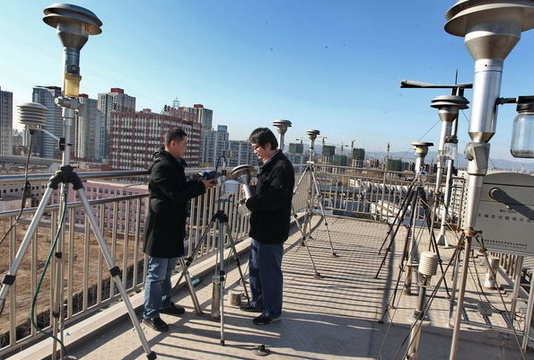China strives to meet air quality standard deadline
 0 Comment(s)
0 Comment(s) Print
Print E-mail Xinhua, October 11, 2012
E-mail Xinhua, October 11, 2012
 |
|
China National Environment Monitor Center (CNEMC) workers inspect PM2.5 monitoring equipment in Beijing on Jan 4, 2012. [File photo] |
China has been racing to meet the objectives set in its revised air quality standards, including promoting the use of an index for PM2.5, or fine particulate matter 2.5 microns or less in diameter.
A total of 138 monitoring stations in 74 cities across the country have begun publishing data on air quality, said Wu Xiaoqing, vice minister of the Ministry of Environmental Protection, said at a Thursday conference.
Another 195 monitoring stations have started trial runs, according to the ministry.
An air quality monitoring network made up of 35 PM2.5 monitoring stations went into full operation Saturday in Beijing. The network, along with monitoring stations in Shanghai and the provinces of Jiangsu and Guangdong will release air quality data online.
The State Council, or China's Cabinet, passed revised air quality standards in late February that included indices for ozone and PM2.5.
PM10 was previously used as part of the country's air quality standards before being replaced by the PM2.5 index, which measures finer particles that are considered more hazardous to health than larger ones.
The government decided to monitor PM2.5 in four municipalities, 27 provincial capitals, as well as three key regions -- east China's Yangtze River Delta, south China's Pearl River Delta and the northern Beijing-Tianjin-Hebei area.
Some 519 million yuan (about 82.6 million U.S. dollars) has been spent to fund the establishment of the monitoring networks, Wu said.





